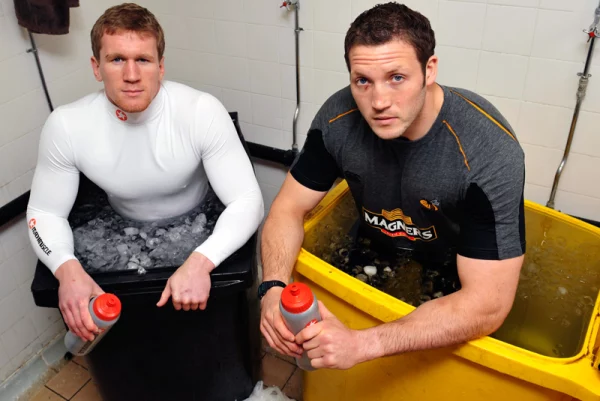Post-workout muscle soreness is a common experience, especially when you increase the intensity of your training, try new movements, or return after a long break. This phenomenon, known as Delayed Onset Muscle Soreness (DOMS), typically appears within 12-24 hours and peaks around 48-72 hours. It is a normal response of the body as muscles undergo microtears and repair themselves to adapt to new workout demands.
DOMS is not dangerous but can easily discourage people from continuing their fitness journey. According to the American College of Sports Medicine (ACSM, 2021), muscle soreness is not caused by lactic acid buildup, as commonly believed, but rather by the muscles repairing microscopic damage after intense physical activity. While it’s impossible to completely eliminate DOMS, there are effective ways to relieve the pain and stay motivated to work out consistently.
Sports massage has been proven to be one of the most effective methods to reduce muscle soreness. A study published in the British Journal of Sports Medicine (2012) showed that massage increases blood flow to damaged muscle areas and alleviates DOMS symptoms. Additionally, cold water immersion (cryotherapy) is another effective way to reduce muscle inflammation and soreness.
“Immersing in cold water at 11-15°C for about 10-15 minutes helps muscles recover faster after high-intensity workouts.” – International Journal of Sports Medicine Research (2016)

Light activities such as walking, cycling, or gentle stretching can also help ease muscle stiffness and improve flexibility. However, you should maintain moderate intensity to avoid further muscle damage. A study by the Australian National Institute of Sport (2019) revealed that staying lightly active during DOMS significantly reduces soreness compared to complete rest.
The most effective way to prevent DOMS is to develop a scientific training plan and gradually increase workout intensity. As recommended by the ACSM, you should only increase your workout volume or intensity by about 10-15% per week to give your body time to adapt. Warming up properly before exercising and stretching afterward are also crucial in minimizing prolonged muscle soreness. “Consistency in training is the key to improving fitness. Remember, muscle soreness is merely a stepping stone to building stronger muscles.”
Nutrition also plays an important role in muscle recovery. Consuming adequate protein helps muscles rebuild faster, while water and minerals such as calcium and magnesium reduce the risk of muscle cramps. Furthermore, quality sleep is essential for the body to repair itself and alleviate soreness.
Post-workout muscle soreness is a sign that your body is adapting and growing stronger. However, if you experience symptoms like sharp sudden pain, significant swelling, or reduced mobility, it could indicate a serious injury that requires medical attention. Maintaining consistent workouts, applying appropriate pain relief methods, and adjusting your exercise routine will help you overcome soreness and move closer to achieving your fitness goals.


HPX24h > Fitness > Post-Workout Muscle Soreness: Tips to Relieve Pain and Stay Motivated in Your Fitness Journey
Top Reads from This Category
Fitness
Swimming: The Golden Key to Physical and Mental Well-Being
Fitness
HIIT: The Ultimate Shortcut to Efficient and Comprehensive Fitness
Fitness
Safe Exercises for Early Pregnancy: Tips to Keep Moms Healthy and Strong
Fitness
Physical Training: The Key to Preventing Nerve Damage During Chemotherapy
Fitness
Postpartum Fitness: Secrets to Maintaining an Active Routine for a Quick Recovery
Fitness
Walking or Running: Which Is Better for Health and Weight Loss?
Fitness
Secrets to Building Muscle with Exercise: From Technique to Habit Maintenance
Discover New Topics
Science
New Hope for the Blind: A Breakthrough in Retinal Implant Technology
Parenting Tips
Why Your Child Might Be Coughing Disruptively During Sleep?
Science
Recreating the Mouse Brain in a Virtual World: The Future of Neuroscience
Healthy Eating
Robert F. Kennedy Jr.: “We Are Being Poisoned Without Knowing It”
Health
Step-by-Step Guide to Safely Relieving Bloating in Children
Animals
The Secret Behind Turtle Eggs Hatching at the Same Time: A Fascinating Reason
Health
Exploring How Microplastics Enter the Body and Affect Health
Space
Tidal Heating: A New Challenge for Extraterrestrial Life
Healthy Eating
How to Create a Diet that Reduces Disease Risk While Still Being Delicious?
Parenting Tips
How Much Sleep Do Children Really Need?
Healthy Eating
Understanding the Important Role of Carbohydrates in Health
Fitness
Mastering the Difference Between Aerobic and Anaerobic: Are You Choosing the Right Workout
Space
Three Earth-Like Planets That Could Support Life: New Discovery from NASA